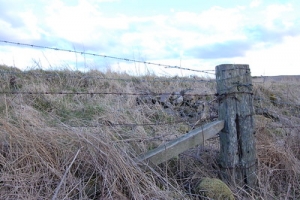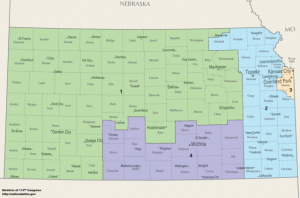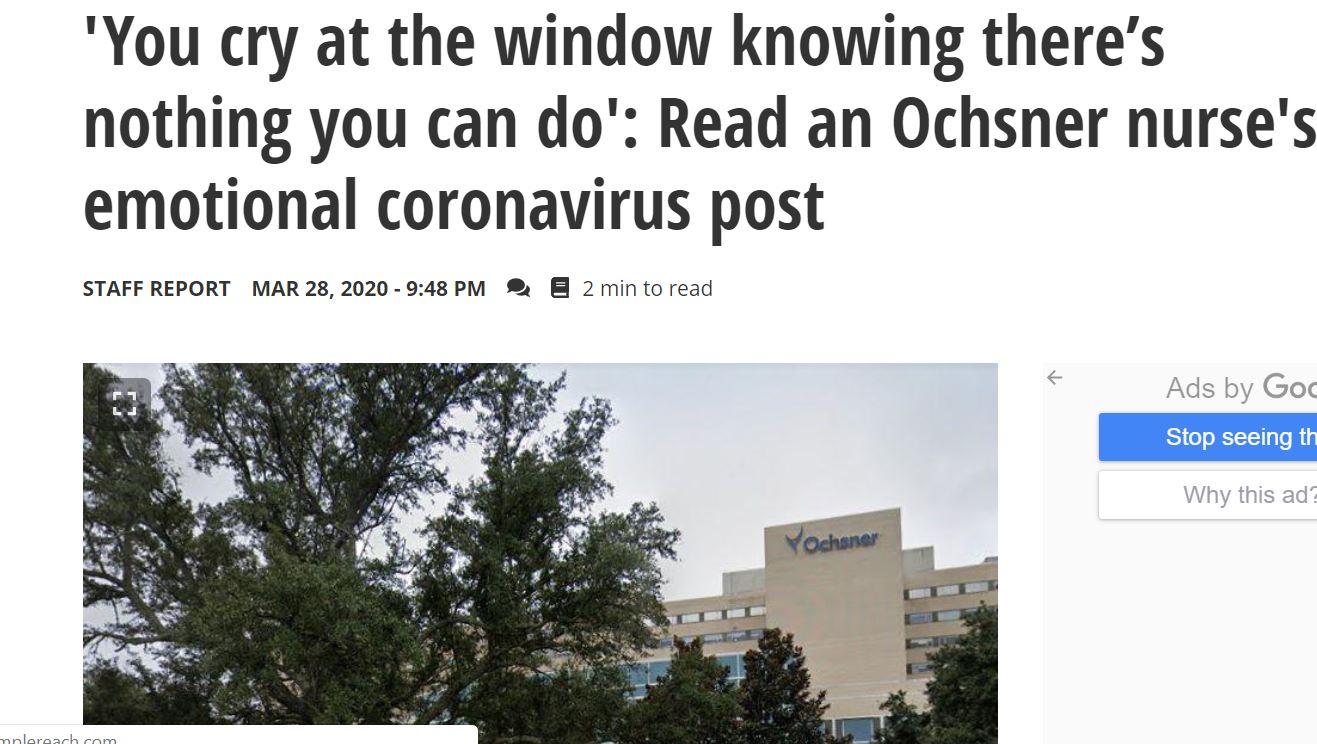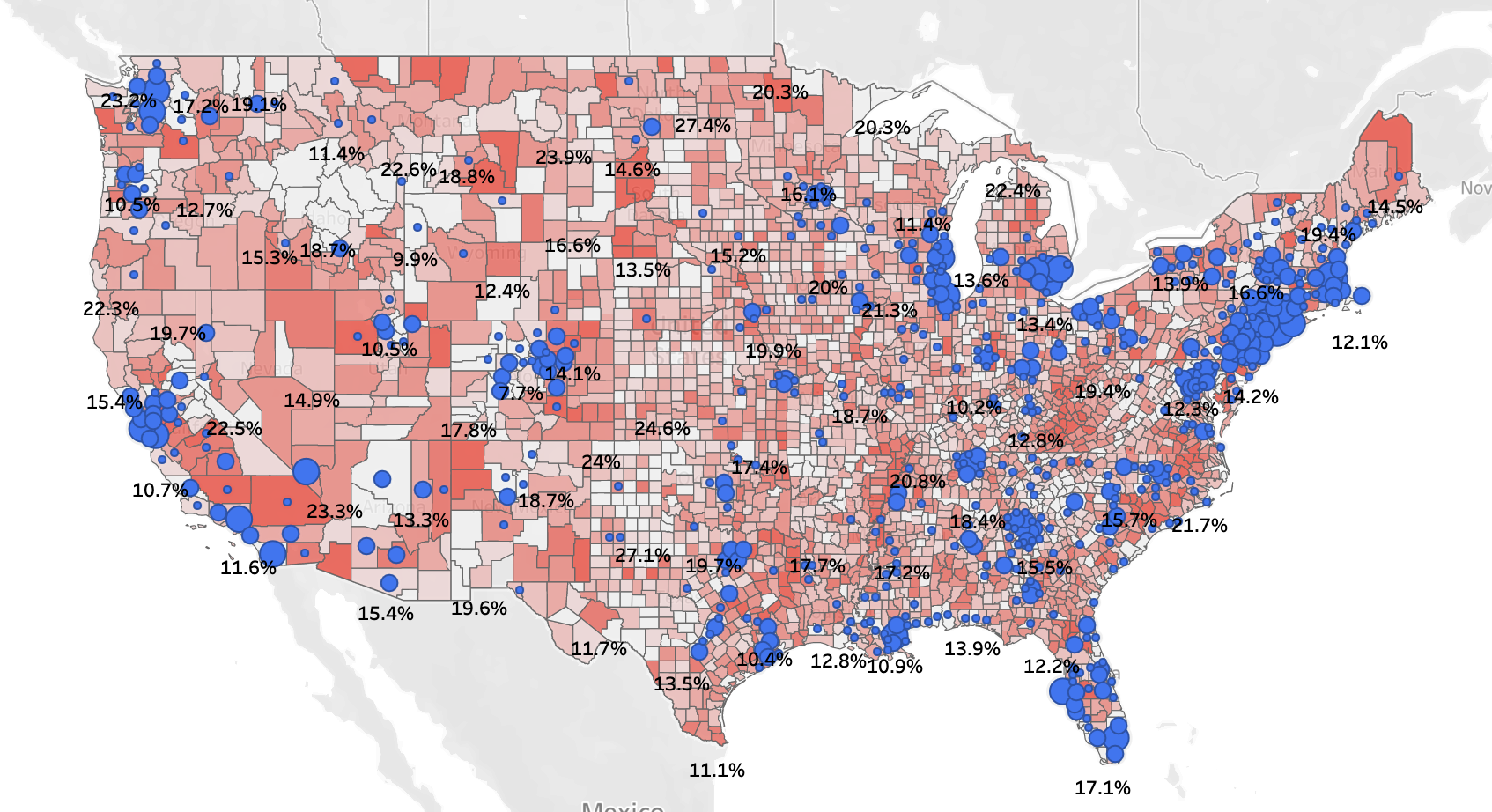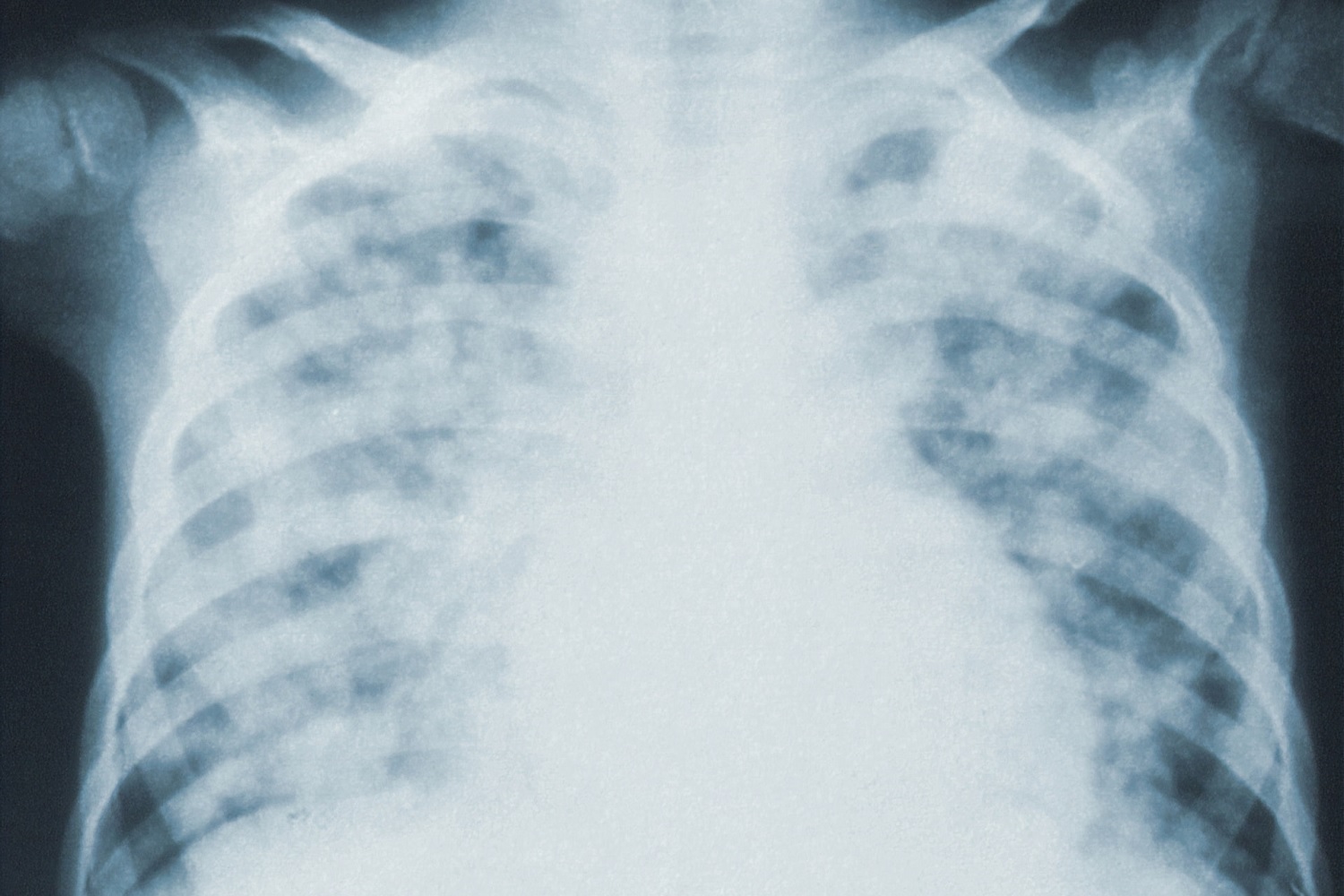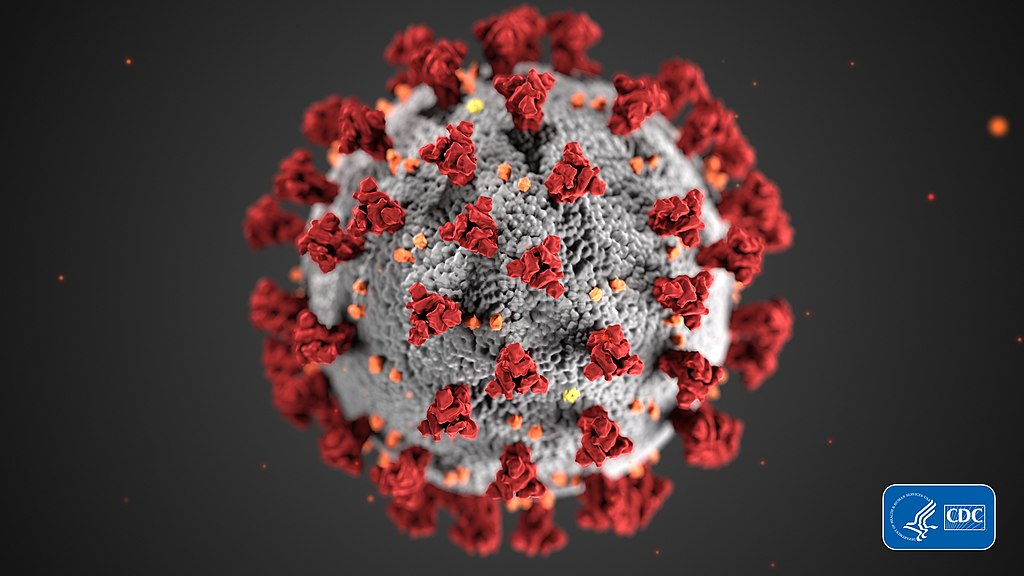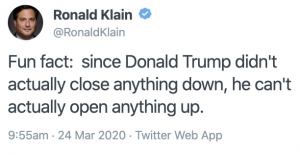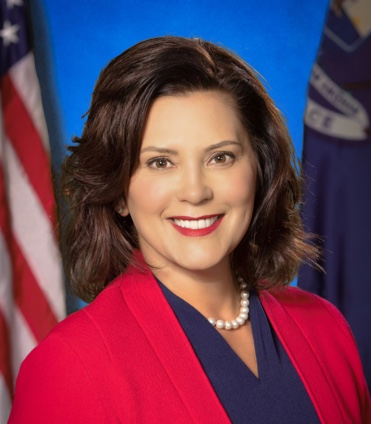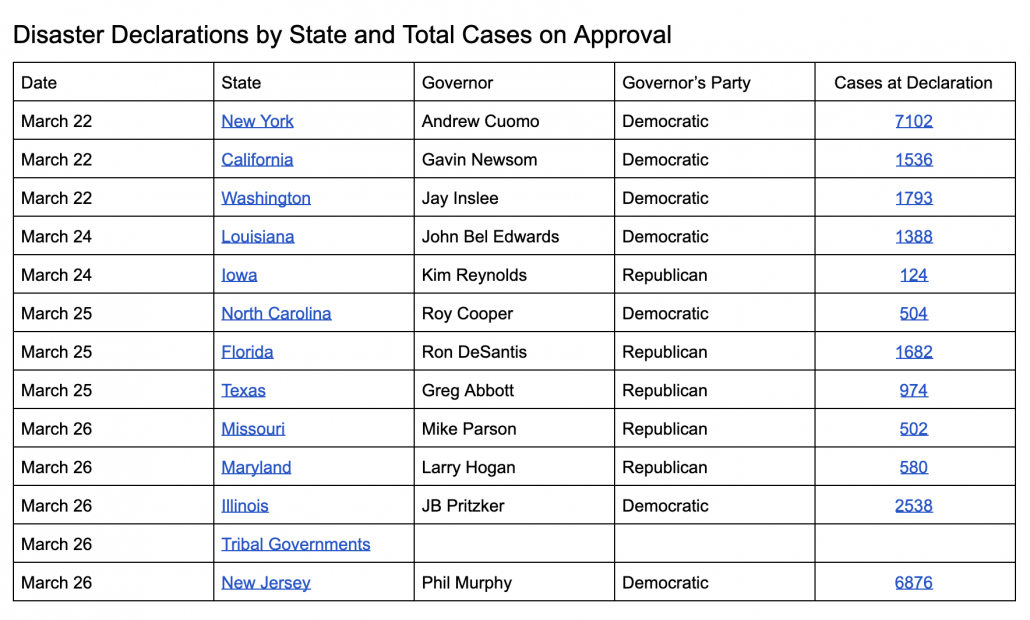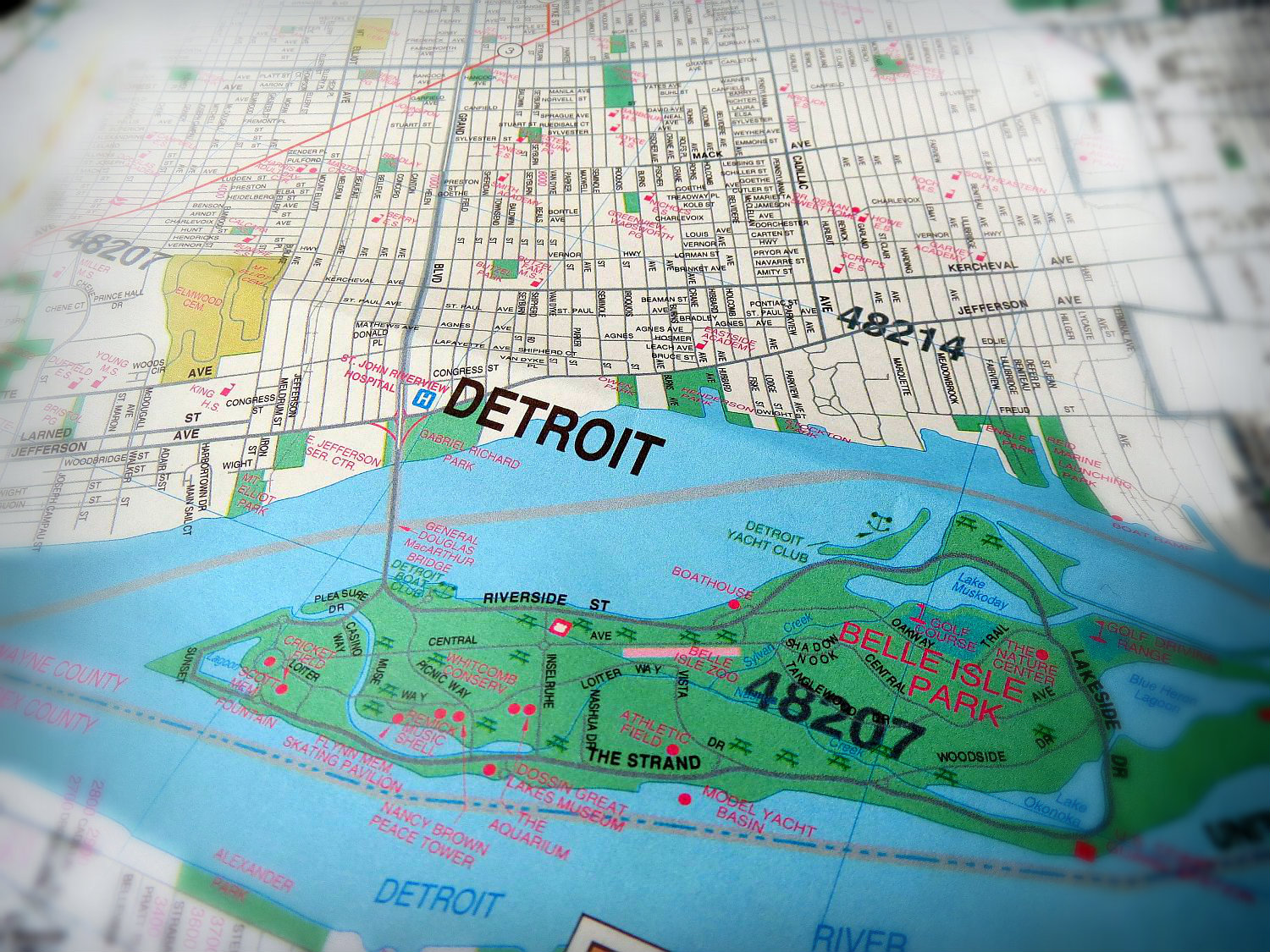Research Misinfo/Disinfo: Check Experts’ Homework
[Check the byline, thanks. /~Rayne]
This is the first of two posts about research information and the disease COVID-19. I want to point out upfront I’m not a scientist/medical professional/public health expert. However I spend a lot of time reading fine print.
One thing I should set straight here is that we tend to use COVID-19 to refer to the disease and to the virus which causes it. This isn’t really accurate; I’ll be referring to SARS-CoV-2 as the virus underlying the disease called COVID-19 in this post.
~ ~ ~
Family members shared with me a link they received from a health care professional we know and trust. This professional told my family a Stanford researcher said “heat and sunshine will help to diminish the virus that causes COVID-19.”
You can imagine my family members’ concern because they’re in Florida where it’s quite warm already and yet COVID-19 cases continue to mount.
This situation provides a good example of how experts misunderstand and/or misuse research information and how lay people can be further misled or confused.
Direct link to video: https://youtu.be/xUGwGgV7r5Y
Note the researcher Dr. Lin’s background, Associate Professor in Neurology and Bioengineering at Stanford. He’s degreed in biochemistry and neurobiology, did postdoctoral work in fluorescent protein engineering. Sharp guy, great CV, but he isn’t a virologist or an epidemiologist.
At 6:45 in the video he refers to the outside of the virus as a “plasma membrane” — that’s just another less frequently-used term referring to a cell membrane. Virologists are more specific when discussing the coronavirus which causes COVID-19; it’s an RNA virus with a lipid membrane, attacked readily by soap though he does mention detergents.
When talking about sunshine or UV effects he discusses coronaviruses as a class, not SARS-CoV-2 specifically; he actually uses the word “estimate” with regard to timing.
Here is the first PubMed study Dr. Lin referred to in his video:
Photochem Photobiol. 2007 Sep-Oct;83(5):1278-82.
Inactivation of influenza virus by solar radiation.
Sagripanti JL, Lytle CD.
https://www.ncbi.nlm.nih.gov/pubmed/17880524
Emphasis mine. It’s not a study about *any* coronaviruses at all.
This is the second PubMed doc he cited:
J Virol. 2005 Nov;79(22):14244-52.
Predicted inactivation of viruses of relevance to biodefense by solar radiation.
Lytle CD, Sagripanti JL.
https://www.ncbi.nlm.nih.gov/pubmed/16254359
This study doesn’t even mention coronaviruses and was published *before* the MERS outbreak — another SARS-like variant of coronavirus which was first identified in 2012 in the Middle East, which I’ll point out is both sunny and hot compared to the northern U.S.
When Dr. Lin discussed temperature he referred to this study on the specific corona virus which causes the disease SARS:
Adv Virol. 2011;2011:734690. doi: 10.1155/2011/734690. Epub 2011 Oct 1.
The Effects of Temperature and Relative Humidity on the Viability of the SARS Coronavirus.
Chan KH, Peiris JS, Lam SY, Poon LL, Yuen KY, Seto WH.
https://www.ncbi.nlm.nih.gov/pubmed/22312351
Emphasis mine. Note this is a study of the virus which causes SARS, not the viruses which cause influenza or COVID-19. This is the abstract:
The main route of transmission of SARS CoV infection is presumed to be respiratory droplets. However the virus is also detectable in other body fluids and excreta. The stability of the virus at different temperatures and relative humidity on smooth surfaces were studied. The dried virus on smooth surfaces retained its viability for over 5 days at temperatures of 22-25°C and relative humidity of 40-50%, that is, typical air-conditioned environments. However, virus viability was rapidly lost (>3 log(10)) at higher temperatures and higher relative humidity (e.g., 38°C, and relative humidity of >95%). The better stability of SARS coronavirus at low temperature and low humidity environment may facilitate its transmission in community in subtropical area (such as Hong Kong) during the spring and in air-conditioned environments. It may also explain why some Asian countries in tropical area (such as Malaysia, Indonesia or Thailand) with high temperature and high relative humidity environment did not have major community outbreaks of SARS.
38C = 100F degrees.
People avoid being tightly clustered in confined spaces at that temperature. Note especially the first sentence about inhaled droplets. It’s not just that the virus may lose viability in a shorter period of time which reduces cases but the proximity of humans during the time the virus is active. Temperature alone is not a factor in reducing transmission rates.
The second study about temperature he cited:
Biomed Environ Sci. 2003 Sep;16(3):246-55.
Stability of SARS coronavirus in human specimens and environment and its sensitivity to heating and UV irradiation.
Duan SM, Zhao XS, Wen RF, Huang JJ, Pi GH, Zhang SX, Han J, Bi SL, Ruan L, Dong XP; SARS Research Team.
https://www.ncbi.nlm.nih.gov/pubmed/14631830
Emphasis mine — this is yet another study of the virus which causes SARS. This is a fairly early study dated 2003; the SARS outbreak began in 2002 with the first epidemic ending in June 2003. Here’s the results in the abstract:
RESULTS:
The results showed that SARS coronavirus in the testing condition could survive in serum, 1:20 diluted sputum and feces for at least 96 h, whereas it could remain alive in urine for at least 72 h with a low level of infectivity. The survival abilities on the surfaces of eight different materials and in water were quite comparable, revealing reduction of infectivity after 72 to 96 h exposure. Viruses stayed stable at 4 degrees C, at room temperature (20 degrees C) and at 37 degrees C for at least 2 h without remarkable change in the infectious ability in cells, but were converted to be non-infectious after 90-, 60- and 30-min exposure at 56 degrees C, at 67 degrees C and at 75 degrees C, respectively. Irradiation of UV for 60 min on the virus in culture medium resulted in the destruction of viral infectivity at an undetectable level.
37C = 98.6F (This made me laugh – it’s the temperature used for many years as a baseline for the average healthy human.)
Sure, heat deactivates the SARS coronavirus at temperatures fatal to humans, but it’s active at least a couple hours at temperatures in which humans live.
The last study cited was:
Aerosol and Surface Stability of SARS-CoV-2 as Compared with SARS-CoV-1
March 17, 2020
DOI: 10.1056/NEJMc2004973
https://www.nejm.org/doi/full/10.1056/NEJMc2004973
https://www.ncbi.nlm.nih.gov/pubmed/32182409
I’ve referred to this several times in comments with regard to hang time of the aerosolized virus. This study is a pre-print, not peer reviewed I should point out. It’s worth reading this study in particular because it’s about SARS-CoV-2 not SARS-CoV-1 and the findings have been misreported or misused a number of times in the media.
Rely on that last study the most because it’s about SARS-CoV-2, not SARS-CoV-1. It confirms that like the virus which causes SARS that SARS-CoV-2 can hang in the air as aerosol, and in this case the study showed it was viable for 3 hours:
SARS-CoV-2 remained viable in aerosols throughout the duration of our experiment (3 hours), with a reduction in infectious titer from 103.5 to 102.7 TCID50 per liter of air. This reduction was similar to that observed with SARS-CoV-1, from 104.3 to 103.5 TCID50 per milliliter (Figure 1A).
A friend sent me a link to this new pre-print study, not peer reviewed yet, published Friday March 27:
Stability of SARS-CoV-2 in different environmental conditions
Alex W.H. Chin, Julie T.S. Chu, Mahen R.A. Perera, Kenrie P.Y. Hui, Hui-Ling Yen, Michael C.W.
Chan, Malik Peiris, Leo L.M. Poon
https://www.medrxiv.org/content/10.1101/2020.03.15.20036673v2.full.pdf
This work confirms the viability of SARS-CoV-2 virus drops with increases in temperature and over time, but do note the data table provided in the study.
What the March 17 and March 27 studies say is that SARS-CoV-2 does weaken and become inactive with heat and over time.
What these and the other studies above do NOT say is that “heat and sunshine will diminish the virus.” There haven’t been any studies about SARS-CoV-2 viability over time with exposure to UV that I’m aware of . And while heat does speed the inactivation of SARS-CoV-2, the virus is still active for 2-3 hours in aerosolized form.
Like exhalation from infected humans, whether symptomatic or not.
It’s critically important that the public understands this virus SARS-CoV-2 is different from its relative, SARS-CoV-1. We can see this difference in both the ease with which it spreads and its much lower case fatality rate. Using studies of SARS and SARS-CoV-1 to extrapolate what SARS-CoV-2 will do has limits because of these key differences.
The same goes for anyone claiming SARS-CoV-2 is just another flu bug, that COVID-19 is just another influenza. It’s definitely not — anecdotal evidence of dead Americans by the truckloads tell you this is not just another flu. This difference is so obvious you should reject any such claims as propaganda. And any researcher making claims about SARS-CoV-2’s viability under certain conditions based on influenza viruses isn’t helping the public.
It’s as unhelpful as telling people erroneously that “heat and sunshine will help to diminish the virus that causes COVID-19.”
~ ~ ~
The bottom line: STAY HOME because aerosolized virus from asymptomatic and pre-symptomatic carriers in closed spaces has resulted in a significant number of confirmed cases versus fomite transmission — virus left on surfaces — though fomite transmission is still possible.
I’ll point to the story the Los Angeles Times published this week — sharing The Daily Beast’s summary because the LAT article is behind a paywall:
The Los Angeles Times reports that 45 out of 60 Skagit Valley Chorale who gathered at the Mount Vernon Presbyterian Church have tested positive. Three have been hospitalized and two have died.
https://www.thedailybeast.com/coronavirus-strikes-45-of-60-people-who-went-to-mount-vernon-washington-choir-practice
These people were careful; they observed social distancing techniques and heightened hygiene. But aerosolized virus got them, and it can get to others even when the weather is warm.
~ ~ ~
Next: the lack of solid research behind a particular off-label therapy.

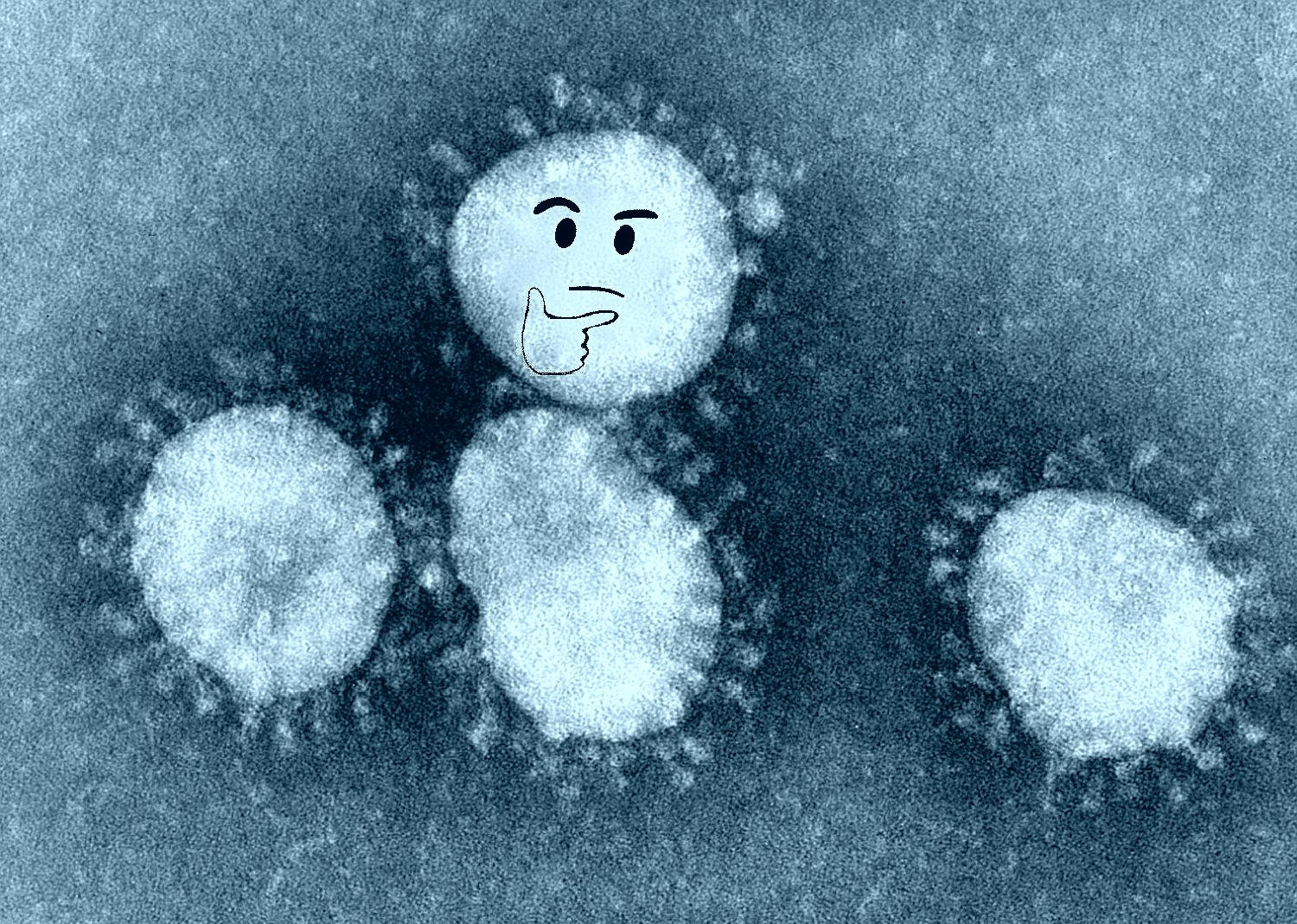
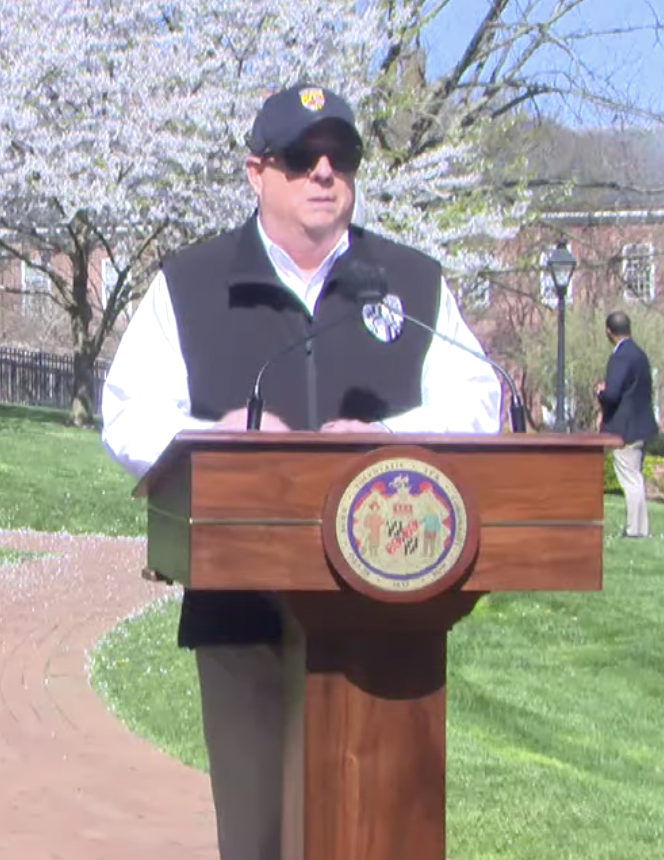
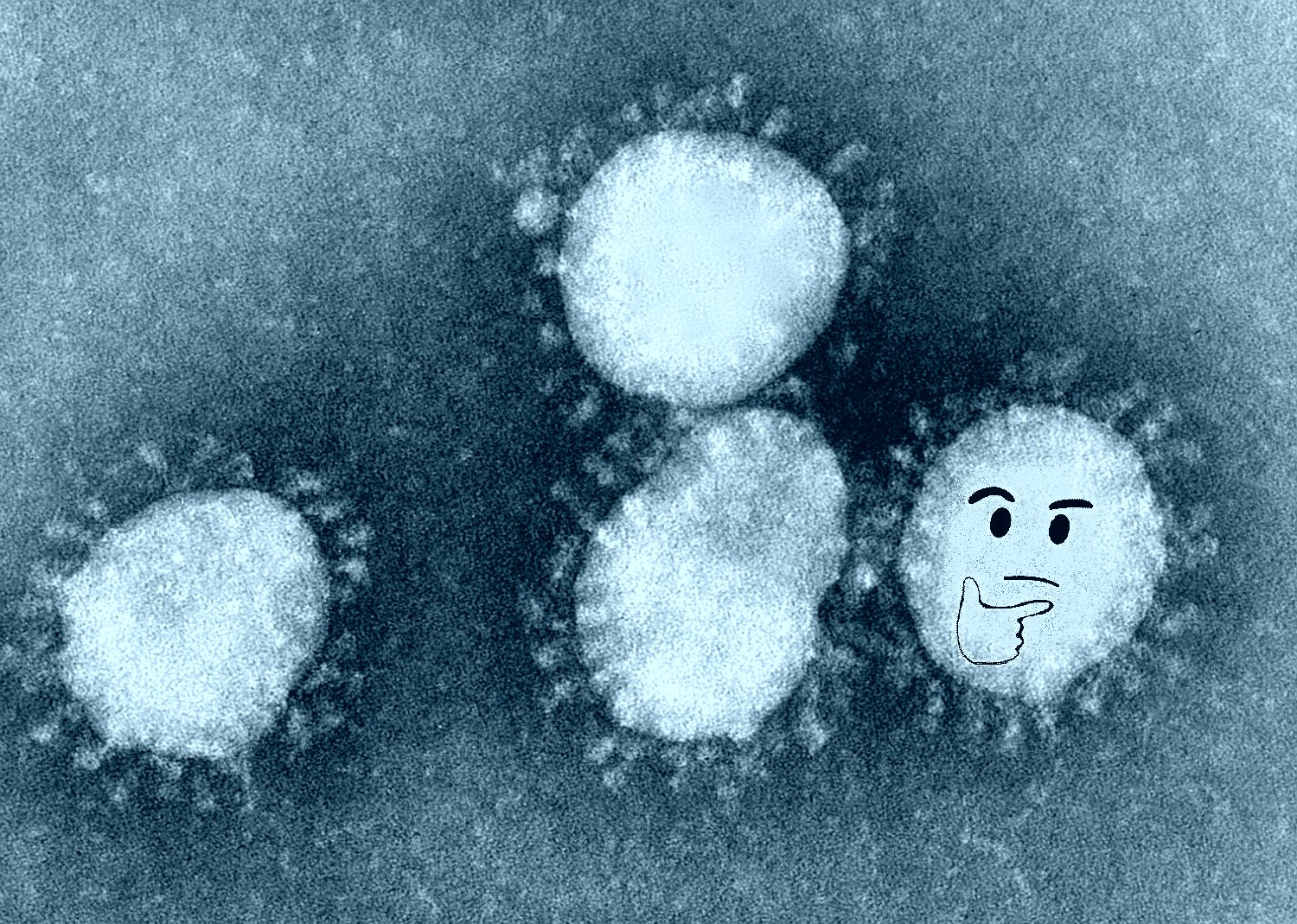
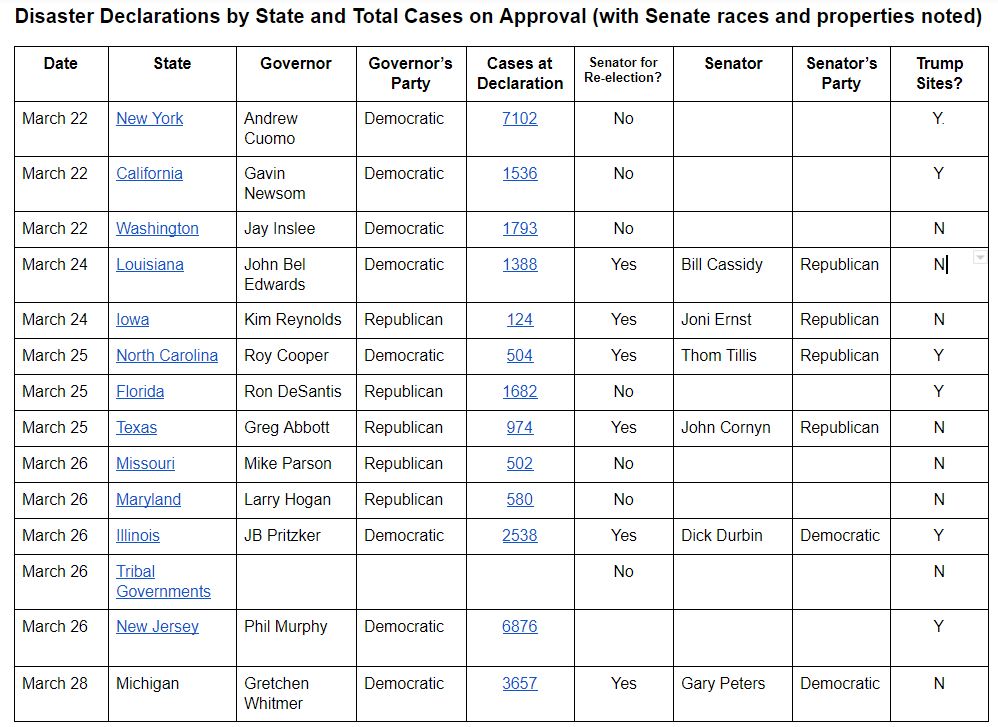
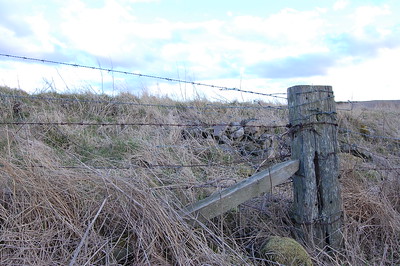 CC by 2.0
CC by 2.0